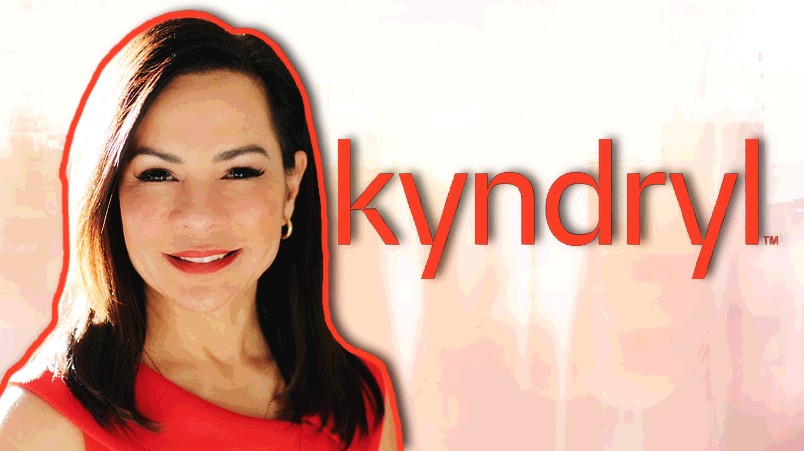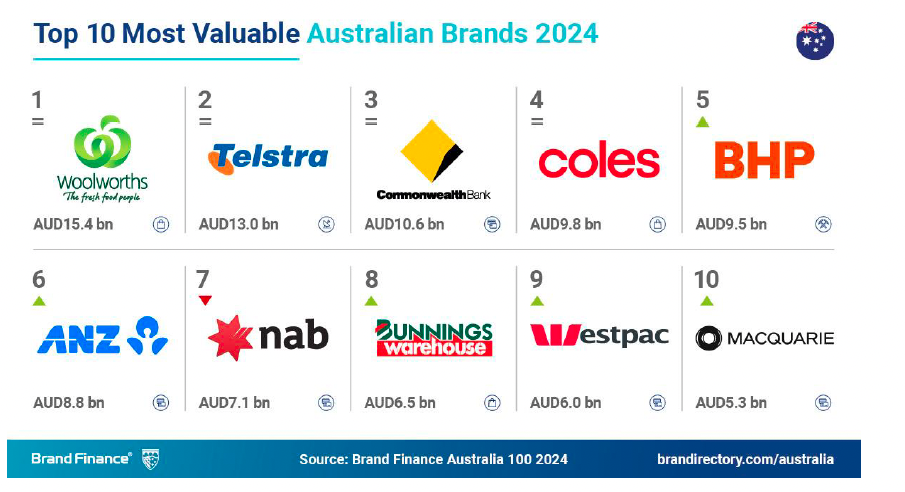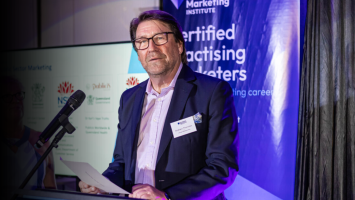Beyond IBM and 30 years of legacy: How Kyndryl’s CMO reshaped a $19bn spinoff – and convinced 90,000 employees her rebrand was a good thing

What you need to know:
- It’s two years since IBM’s legacy technology services business, GTS, was spun out to become a standalone company. The decision came after year-on-year revenues began falling and GTS’s position in market became tired and increasingly less innovative.
- Former IBM US CMO, Maria Winans, has been at the helm of creating a new brand inside out for the new business, resulting in the name ‘Kyndryl’ and a new strategy, culture and way of doing things that’s emphatically nothing like Big Blue.
- A focus on improving the profitability of accounts, advanced delivery and striking alliances with the “cool kids” of modern IT infrastructure has been critical to how Kyndryl sets up a more viable long-term growth path.
- Focusing on culture at a leadership level, humanising relationships, adopting a new vocabulary have all been critical in demonstrating the different way Kyndryl is going to market both for customers as well as staff.
When the spin-off was first announced, there was a pause. This was one of the largest parts of IBM, and it was such a traditional, heritage, foundational business. It struck a chord and many were asking 'what’s happening here, wow'.
There is a quip every CIO and IT manager has heard and confidently repeated to a tech colleague, peer or journo: No one ever got fired for buying IBM.
Equally, there are many people who proudly earned and wear the badge of spending their whole careers working for Big Blue.
So how did Maria Winans, a 30-year marketing veteran of the safe, heritage-loaded IT brand, stop bleeding blue and embrace a fresh brand challenge? And how did she then go about convincing a bunch of other IBM career lifers, customers and stakeholders that it’s grand being part of a different brand, business and culture altogether?
That was the momentous challenge confronting Winans when IBM made the decision to spin out its legacy infrastructure services arm and set up a standalone company under a new name, new agenda, new go-to-market strategy, new ethos, new brand and yes, new colour palette.
Winans is CMO of Kyndryl, the former IBM Global Technology Services business with an 85,000 employee-strong base providing mission-critical IT services in 63 countries to governments and 4,000+ enterprise customers including Myer, Mitsubishi Motors and Australia’s Department of Health and Aged Care.
Winans was IBM Americas CMO before the spin-off decision two years ago. She joined IBM as a graduate armed with both a business and arts degree and held various roles before moving into marketing, then the top US marketing job. She became Kyndryl’s third appointment and paints a pretty rosy picture of the opportunity, as well as the appeal she saw as marketer to build a brand from scratch.
“What marketer doesn’t want to be part of an opportunity to create a brand from the beginning, to build a team, and to be part of the largest spin-off in the world with a great legacy but an opportunity to completely recreate and build for now?” Winans tells Mi3.
“There were so many times while I was at IBM when I said, ‘I wish we could do this’, or ‘I wish I could completely this turn upside down’. But with the heritage, there were boundaries. To me, it was one of these moments of taking the best of what I had learned through IBM, but also gaining an opportunity to do the things I’ve always wanted to do.”
Yet there’s no denying getting GTS out of IBM and transforming its services and people into Kyndryl has been an emotionally challenging job – and one with a long course still to run.
Most industry pundits agree creating a new company was necessary if GTS was to maintain long-term relevance. IBM’s traditional services business had been experiencing falling revenues due to a lack of investment, from US$21.8 billion in 2018 down to $19.35bn in 2020. It was also grounded in traditional on-premise infrastructure and products within the IBM stack, and lacked tech innovation lustre.
“When the spin-off was first announced, there was a pause. This was one of the largest parts of IBM, and it was such a traditional, heritage, foundational business. It struck a chord and many were asking ‘what’s happening here, wow’,” Winans recalls. “But when you thought through it, you saw it was such a smart move. The opportunity for this type of business to grow had to be outside of IBM.
“Inside IBM, the business was very much boxed into the IBM portfolio and selling what’s on the IBM truck. If we really wanted to be a services company, we had to really think about meeting customers where they are. Even if that meant working with our past competitors – Microsoft, and the hyperscalers. That opportunity was very exciting – we got the opportunity to double our TAM [total addressable market, which jumped from $240bn pre-spinout to $540bn in 2024], which is what we did and to serve a bigger market, plus an opportunity to set up a company built truly as a services-led business.”
Numbers are pointing in the right direction. In its September 2023 quarterly financial results (second quarter), Kyndryl reported revenue of $4.07 billion, a drop of 2.54 per cent year-on-year. However, figures showed an improved net loss result of $142m, including $87m in transaction-related costs and workforce rebalancing charges – the legacy from zero-profit, low-margin deals done while part of IBM to prop up deals in other parts of the organisation. That compares to a net loss of $281 million for Q2 2022.
In addition, Kyndryl has made progress in new growth areas. For example, its modern hyperscaler business, non-existent under its previous guise, brought in $180m in revenue during the first half of the financial year. It’s an indication that ambitions to hit $300m in annual revenues across the hyperscaler unit in fiscal year 2024 are achievable. Kyndryl also realised $400m in annualised benefits from its strategy of addressing poor-margin customer contracts and improving gross profits. And the business has redeployed more than 7,500 staff to new revenue streams and to backfill attrition.
The good, bad and ugly of exiting IBM
Recognising something needed to change was one of the good bits of the transition. Another has been striking alliances with the most influential hyperscalers and cloud-based providers in the world: Amazon Web Services, Microsoft and Google Cloud. Unthinkable as IBM.
The bad and ugly were confronting cultural change and challenging perceptions of the value of what Kyndryl was all about. The first tough climb Winans points to is employees.
“When you are, like myself, a 30-year IBM veteran, you have a heritage and way of doing business. I’m an IBMer, I bleed blue, and now you’re telling me I have no choice because I’m part of this shift into a new company? A lot of people were in shock and not sure about what was going to happen, and if this was really going to be a new company,” she says.
“There was a moment of not understanding. But when you saw the motions and could see the great opportunity to move forward and be part of something new, excitement started to be felt.”
What got Winans over the line was her first interview with Kyndryl CEO, Martin Schroader, whose leadership style she admires.
“That entire first conversation was on culture,” she says. “It was taking the best of IBM, but also having a company which at the centre, has its core in people… When people are happy, engaged, they feel valued and it drives the business.
“I loved the fact we were asking how we turn the light on nearly 90,000 people, to get them excited and motivated about being at the core of what our new company was going to be about.”
Culture is breakfast
Fostering a non-IBM culture became instrumental to the branding process – well before any brand name and logo was dreamt up.
“We wanted to instil behaviours around being restless, empathetic and devoted,” Winans continues. “Restless meant anticipating that next motion; empathetic meant listening versus just showing up and telling; devoted was saying hey, ‘I’m not just committed to your growth, I’m devoted to our growth together’.
“We started bringing vocabulary in like ‘heart’ and ‘proud of progress’. We are the hearts and lungs of our customers; the hearts of our people are what we have to build passion with and growth. It gave us the language to humanise what we do.”
Then came the name ‘Kyndryl’ – a combination of ‘kin’ to signal kinship and trusted relationships, and ‘tendril’ for the notion of a plant that grabs on and spirals around something to grow. A lowercase brand name and red palette followed. Not an IT acronym or blue hue in sight. Harris Poll group was kyndryl’s research partner on the brand study.
“We went through a lengthy process of understanding and positioning the brand because it was going to signal the new,” Winans says. “It’s about the relationship we have with the customers and the growth we drive together – you win, we win.
“We also knew we had to make up a name. You think of words like apple, orange – with anything we wanted to trademark or register, there was just no way we would ever be able to hold onto a word that already existed. And no acronyms or anything that signalled the old. We even avoided words like ‘infrastructure’ as it would have signalled where we were coming from.”
Winan says she’ll never forget the day the Kyndryl name was announced. “I said to our CEO, we are ready. It’s going to be shocking and different to people,” she says.
“It was as I expected. One third of the people said ‘this is great, it’s so fresh, modern’… We then had a third of people who were believers but had to have time to digest it, saying ‘I think I like it, I just need to think as it’s so different’. Then there were a third who hated it, saying ‘no, I don’t like it, this is stupid’.
“It’s been amazing since then watching the movement of how the brand shows up in everything, because a brand is a lived experience and we’re a services company. Every time I’m in front of teams, I’ve said you are the brand – we don’t sell product, it’s you who are the experts. It’s a mindset change – it’s your behaviour, and how you show up every day.”
Winans admits engagement scores across the employee base “were not good” as Kyndryl stepped into the unknown. Taking back-end people who “never saw the light” and thrusting them into the spotlight is one heck of a journey to take.
“We were managing the complexity but we were never at the front of the advertising, media, or market message when part of IBM,” she comments. “Now, being front and centre and saying this company is about you and your expertise, get excited about that, meant we had to motivate employees and help create that belief.
“Having a point of view has been the big thing from a people perspective.”
Inside IBM, the business was very much boxed into the IBM portfolio and selling what’s on the IBM truck. If we really wanted to be a services company, we had to really think about meeting customers where they are. Even if that meant working with our past competitors – Microsoft, and the hyperscalers. That opportunity was very exciting – we got the opportunity to double our TAM [total addressable market], which is what we did and to serve a bigger market, plus an opportunity to set up a company built truly as a services-led business.
Flat, fast and focused
Strategically, other tangible ways Winans and her team sought to get brand buy-in internally is supporting behaviours via its ‘3Fs principle’ – flat, fast and focused.
“IBM was very hierarchical. We were slow to make decisions in the field and we had to reduce layers to drive speed and decision-making in front of customers and be more responsive,” she says.
In complement, three initial actions aim to stabilise the business, drive expansion and improve profitability: The ‘3As’– alliances, accounts and advanced delivery.
“We kid around we’re showing up with the cool kids now. It’s about how we show up and work together in a cool, partnership way,” Winans says of the emphasis on alliances. Accounts, meanwhile, is about lifting price premiums and ditching unprofitable customers.
“We had a lot of accounts that were not profitable. We had to confront that with customers and say we need to get paid for the value. Call it renegotiating the contracts: If you value what we have done for you, we need to really look at what it is we do,” Winans says. “It’s going from being part of a bigger contract that included all these other components of the business to saying for what we do now, this is the value we bring. We’re the best at delivering that, and you want us to be around because we support your mission-critical systems. It was a tough thing to do.”
Simplifying engagement was another must. “Customers told us: Whatever happens in this spin-off, bring your expertise and make it easy to do business. You’re too complex. You have this strong heritage and it holds you back from being modern and new,” Winans says.
This feeds into the third A, advanced delivery, aimed at automating and scaling services to improve responsiveness and innovation. A step forward here is Kyndryl Bridge, an open integration process designed to aggregate data and insights, giving customers greater visibility across their technology environments while opening up digital services personalisation.
“We started to say these are the behaviours, this is the organisational construct we’re going to instill. Then we called out the ‘Kyndryl way’; it’s not the IBM way,” Winans says.
Balancing the ‘we’ with each individual’s role and clarifying how everyday tasks move things forward has been critical as well. Winans adds Kyndryl’s first face-to-face executive meeting fully focused on culture, with an external agency brought in to help articulate behaviours, symbols and systems indicating this new culture. There’s even a little handbook outlining key leadership behaviours in the pocket of executives today.
Secular tech trends
Alongside internal changes are ‘secular trends’ Kyndryl is looking to tackle around ongoing digital transformation. One of these is moving workloads closer to the cloud. Another is tackling complexity in technology orchestration due to increasingly hybrid ecosystems and data residing in multiple places. Then there’s Gen AI.
“We handled more data running mission-critical systems over 30 years than anybody. We have an opportunity and sweet spot to maximise on that. We are not your AI provider, but we’re the ones supporting you in getting ready for AI, whatever it means to you,” Winans says.
Finally, there’s skills shortages Kyndryl can plug around security, cloud migration, infrastructure, networking and data services.
“When you think about these secular trends, then think about what it is we are known for in our core customers, it’s only a percentage of what’s needed,” Winans says.
All this has led Winans to up her game in account-based marketing, shifting away from broad marketing demand gen. She’s invested in lifetime value modelling against customers by profitability, revenue, business done today, who else a customer is doing business with, what markets are growing and what’s not, and the potential for accounts in a year or two years “based on certain motions”.
“Then the marketing follows that – we’re aligned to how we start to market around where the opportunity exists for customers. That is all data-led, very targeted,” Winans says. “We’re also opening up to new channels we haven’t used before, such as social and LinkedIn.”
Moving the needle… in the right direction
Measures indicating efforts are paying off include employee engagement as well as brand reputation and consideration tracking, according to Winans.
While unable to share exact data, she claims Kyndryl Marketing Engagement Index has improved year-on-year and is tracking 9 points higher than industry average, surpassing averages across the top 25 per cent of companies.
In addition, Kyndryl invested in a Brand Health Study gauging performance among both customers and non-customers. In a focused survey of 57 of customers, Winans says “to know Kyndryl is to prefer Kyndryl”.
“Kyndryl customers are very aware of Kyndryl, familiar with us and have high brand preference, consideration, and likelihood to purchase scores. These are impressive scores in two years, and it reflects the focus and determination of the entire business to show up differently,” she says.
Nearly two-thirds (65 per cent) say the company is showing up differently, in a more positive way, with trust, transparency and collaboration key indicators.
“The good news is over 50 per cent of customers strongly agree Kyndryl is trustworthy, innovative, and an expert,” Winans says. “Customers associate Kyndryl with easy to work with, modern and good value, and are less likely to associate Kyndryl with the negative attributes slow, expensive and complex”.
There’s more work to do with prospects, but Winans is pleased with results so far.
“When you think about where we have come from and what customers have told us – hey, keep your expertise, make it easier to do business – these are things they’re seeing us continue or seeing movement on. It’s given us a measure on where we have momentum, and that we’re focused on the right things,” she adds.





